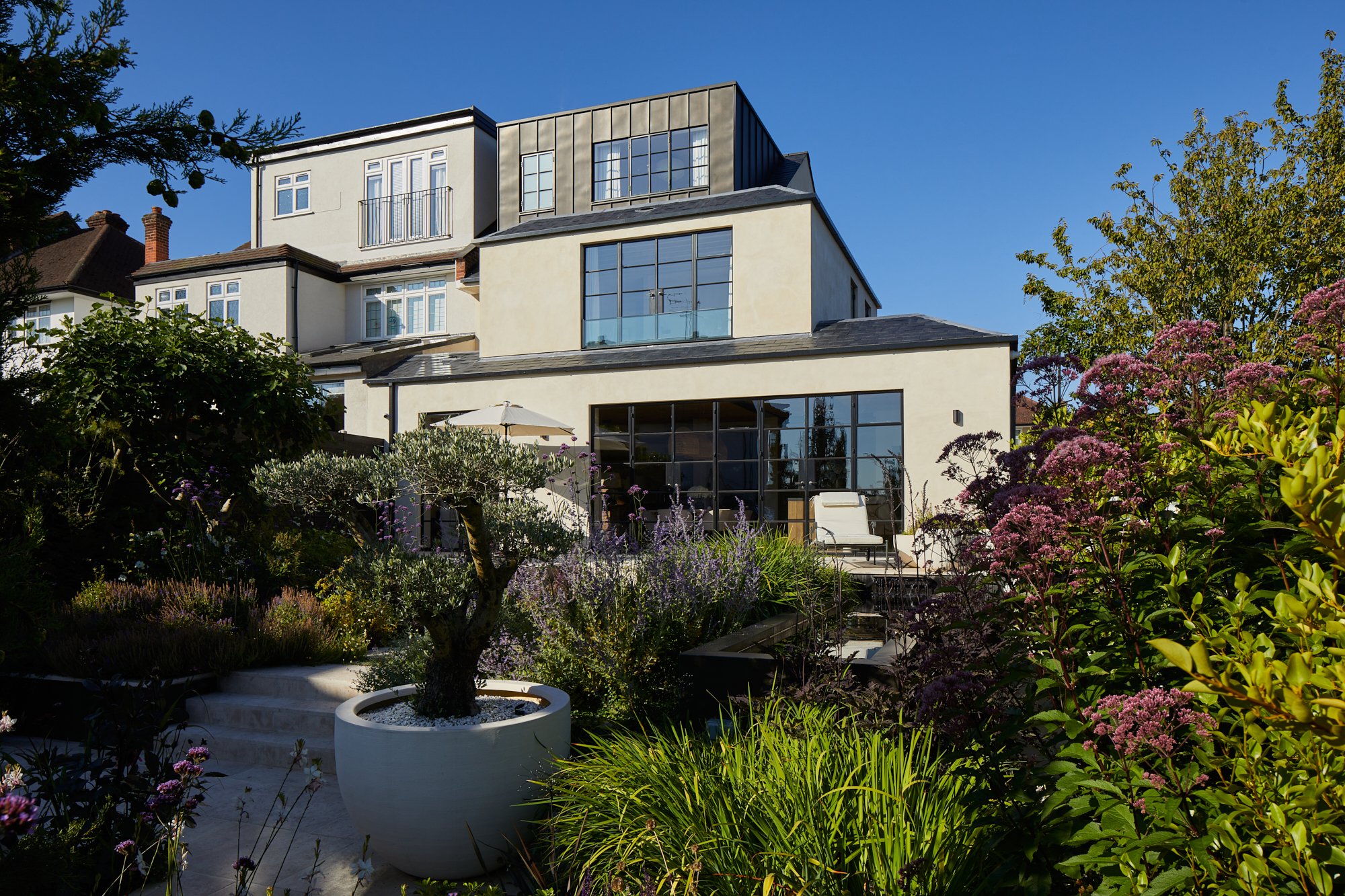The Expert Guide to using planters and pots in the garden effectively
Useful and attractive features in their own right, pots and planters can help to add a sense of style to a new garden, or they can be easily ‘retrofitted’ into an existing garden.
Pots and planters in the garden offer the opportunity to bring in flashes of seasonal colour. If you are a gardening traditionalist you may choose bright bedding or other annual plants. If you are trying to garden more sustainably though you would want to plant perennials with long flowering seasons that add colour year after year - plants such as Geranium ‘Rozanne’ would be useful in this situation. Alternatively you may want to create a feature using plants that remain evergreen all year round - adding structure that does not die back in the winter. Topiary balls (Box or Yew), lavender, or grasses that like it in dry pots (like Stipa tenuissima) would all work well.
So why use pots and planters in the garden?
The answer is that they create structure. They can even sometimes form the basis of the underlying structural elements of the garden, irrespective of the season, and when repeated through the space (using the same styles, sizes, or materials) they can create a coherent narrative to the garden. Of course larger pots can also form a focal point within the space - on a terrace or in a border or at the end of a sight line through the garden. Whether planted or not these will need to be large enough to give structure that works well in the proportions of either the space allotted or the garden as a whole.
Using a pot or planter as a focal point will draw visitors into the garden. Pots and planters can though be used in the opposite way - to form a barrier to movement and to keep visitors away from where they are not wanted (away from potential hazards, garden stores, or compost heap areas for example). A group of pots at the edge of a patio for example will also visually reinforce the transition from hard landscaping to beds, borders, or lawns. Pots and planters may also act as screens to hide what lies beyond with a larger planting installed inside them - for example they can be placed in key positions to screen water-butts, bins, or a neighbour’s views into your patio. And finally they can be used to simply fill an empty gap - as a temporary installation or if a hole develops during the growing season in the borders when plants die back (for example if you have ornamental poppies).
How should you use pots and planters in the garden?
There are a number of factors to consider here (whilst remembering that personal taste is a crucial consideration).
You will find that a stronger visual impression is left if you don’t mix planter or pot styles too much (of which more below). By this I mean if you choose to have a certain type of pot then it is best to repeat this - either the same pot of the same size, or the same style of pot, or the same design of pot at a variety of sizes.
Similarly for a ’designed’ look larger planters are invariable better - don’t be scared of the size as ideally planters should be as large as will still work within the proportions of your garden and the space they are being installed into. Of course larger pots tend to have a larger price tag so it is useful that fewer larger pots will work better together (alone or in groups of 3 or 5 work well). Bigger pots also help if you are planting them up, as a larger volume of soil dries more slowly and plants tend to do better in damper soil than in smaller, drier, pots (unless you’re growing herbs or alpines of course). A word of caution about tall and narrow pots. You need to make sure they are not going to fall over (if knocked or in a winter storm) and that planting them does not make them top heavy (and thereby more prone to fall over).
Finally the choice of materials available allows you to be creative. Terracotta is the choice for the traditionalist (and the colour tones often work well against brick walls if you have a smaller space). Choosing more expensive frost resistant pots though is crucial if you live in the UK and want to use terracotta. A more contemporary design can be gained with GRP pots (Glass Reinforced Plastic). These are light, durable, frost resistant, and come in a whole variety of colours - from subtle tones to primary colours to metal effects. It is their lightness though that is most useful meaning that they can be moved if needed (especially if, in large pots, you use recycled polystyrene at the bottom so you only need 20cm of soil at the top of the pot)…
Other materials may also be considered. Wood (as a planter or a barrel for example) can work well but needs to be protected from rot - either by the craftsmen who make it of by installing a liner on the inside before filling with soil. Plastic pots are also freely available - but cheap plastic pots always look like cheap plastic pots so be wary if you are trying to create a specific look and feel in your garden. Finally metal pots and planters are available - although these can be very heavy so consider getting mid sized pots or perhaps using a GRP alternative if you want them to be moveable?
Personally I like to relate the material used to other choices made elsewhere in the garden - or even to choices with the interior decor. This can tie the whole space together.
Important considerations when buying pots and planters…
It is important that the style of pot or planter you choose works within your garden and enhances the space. There are just a few additional considerations though if you intend to plant them up (as opposed to using them as a sculptural piece in their own right).
First is to make sure that there are drainage holes (to prevent water-logging) and to make sure that these are kept open by laying crocks over them before filling with soil (which also prevents the soil from dribbling out if it dries out).
Second is the opposite issue - one of not enough water. In this case it may be worth considering an in-pot, self-watering, reservoir that can be topped up with water occasionally or when you go on holiday - making sure that the plants keep watered through the summer. A variety of these are available although I have had good success with Mona Reservoirs. Just bear in mind though that if the plants you selected like dry soil a reservoir may keep it too damp and the plant will start to look unhappy with its situation until the water is used up!
So that’s it. Pots and planters can work wonders in any garden. You are only limited by your style, your budget, and your creativity.
Related Articles:
The Beginner’s Guide to How and When to Water
The Expert Guide to beautifying your garden using sculptures, statues or ornaments

